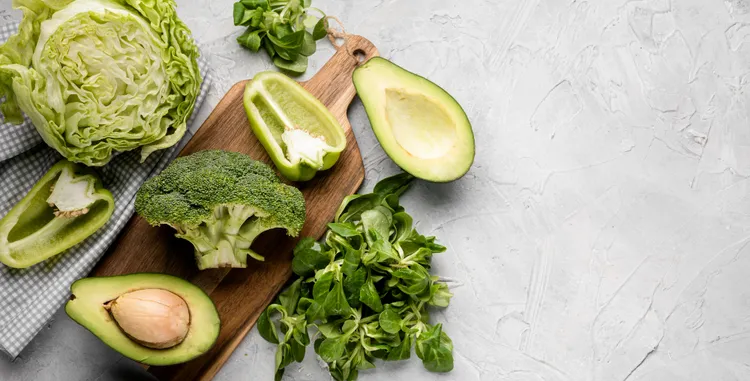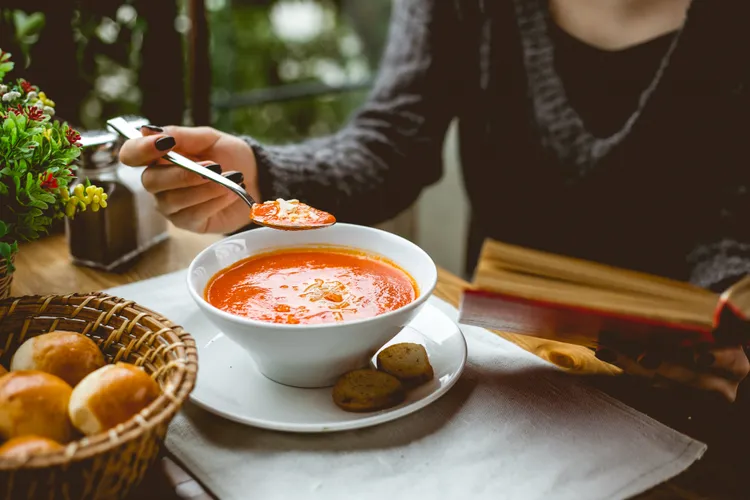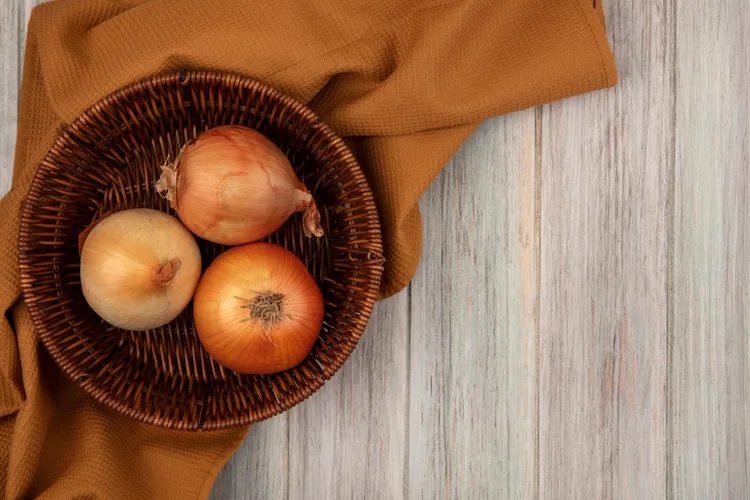The Ultimate Guide to the Best Low-Carb Fruits and Vegetables for a Healthy Diet
In the world of nutrition, low-carb diets have gained popularity for their potential to support weight management, stabilize blood sugar, and enhance overall health. Whether you’re following a ketogenic diet, managing diabetes, or simply aiming to reduce carbohydrate intake, incorporating low-carb fruits and vegetables is essential for maintaining nutrient density, fiber, and flavor in your meals. Unlike high-carb options like potatoes or bananas, low-carb produce offers vitamins, minerals, and antioxidants without spiking blood sugar. We’ll explore the best low-carb fruits and vegetables, their nutritional benefits, and practical ways to include them in your diet.

Why Choose Low-Carb Fruits and Vegetables?
Low-carb diets typically limit carbohydrate intake to 20–100 grams per day, depending on the plan (e.g., keto diets aim for 20–50 grams). Fruits and vegetables are vital for providing fiber, vitamins, minerals, and phytonutrients, but many are high in natural sugars or starches that can derail a low-carb lifestyle. Choosing low-carb options ensures you get these benefits without exceeding your carb limit.
Low-carb produce also supports:
- Blood Sugar Stability: Minimizing carb intake helps prevent spikes and crashes, which is crucial for diabetes management and energy balance.
- Weight Management: High-fiber, low-carb foods promote satiety, reducing overeating.
- Gut Health: Many low-carb vegetables are rich in prebiotic fibers that nourish beneficial gut bacteria.
- Nutrient Density: These foods deliver essential nutrients like vitamin C, potassium, and antioxidants with minimal carbs.
Below, we’ve compiled a detailed list of the best low-carb fruits and vegetables, including their net carb content (total carbs minus fiber, as fiber isn’t digested into glucose), nutritional highlights, and serving suggestions. Net carbs are the focus for most low-carb diets, as they reflect the carbs that impact blood sugar.
The Best Low-Carb Fruits
Fruits are often higher in natural sugars than vegetables, but several options are low enough in carbs to fit into a low-carb or ketogenic diet. Here are the top choices, based on a standard serving size (about 100 grams unless noted) and their net carb content:
- Berries (Raspberries, Blackberries, Strawberries)
- Net Carbs:
- Raspberries: ~6g per 100g
- Blackberries: ~5g per 100g
- Strawberries: ~6g per 100g
- Why They’re Great: Berries are among the lowest-carb fruits, packed with antioxidants like anthocyanins, which reduce inflammation and protect against chronic diseases. They’re also high in fiber, which slows sugar absorption.
- Nutritional Highlights: Rich in vitamin C, manganese, and polyphenols. For example, 100g of raspberries provides 26% of the daily value (DV) for vitamin C and 7g of fiber.
- Serving Ideas: Add to Greek yogurt, blend into smoothies, or enjoy as a fresh snack. Pair with nuts for a balanced low-carb treat.
- Net Carbs: ~2g per 100g (half an avocado, ~70g, has ~1.5g net carbs)
- Why It’s Great: Technically a fruit, avocado is a low-carb superstar, loaded with healthy monounsaturated fats that support heart health and satiety.
- Nutritional Highlights: Provides potassium (more than a banana per gram), vitamin E, and folate. One half avocado offers ~10g of healthy fats.
- Serving Ideas: Use in salads, mash for guacamole, or slice onto eggs. Blend into a creamy keto smoothie.
- Net Carbs: ~3g per 100g
- Why They’re Great: Olives are low in carbs and high in healthy fats, making them a keto-friendly fruit. They contain oleuropein, an antioxidant with anti-inflammatory properties.
- Nutritional Highlights: Rich in vitamin E and iron. Black olives tend to have slightly fewer carbs than green.
- Serving Ideas: Snack on them, add to Mediterranean-inspired salads, or blend into tapenade.
- Net Carbs: ~3g per 100g (one medium tomato, ~120g, has ~3.5g net carbs)
- Why They’re Great: Botanically a fruit, tomatoes are low in carbs and high in lycopene, an antioxidant linked to heart health and cancer prevention.
- Nutritional Highlights: Provide vitamin C (14% DV per 100g), vitamin K, and potassium.
- Serving Ideas: Use in salads, make a low-carb salsa, or roast with olive oil for a side dish.
- Net Carbs: ~6g per 100g (juice of one lemon, ~30g, has ~2g net carbs)
- Why They’re Great: These citrus fruits are low in carbs when used in small amounts (e.g., juice or zest). They add flavor without sugar overload.
- Nutritional Highlights: High in vitamin C (53% DV per 100g for lemons) and flavonoids with antioxidant properties.
- Serving Ideas: Squeeze into water, use in dressings, or zest over seafood.
- Net Carbs: ~6g per 100g (fresh coconut meat)
- Why It’s Great: Coconut is low in carbs and rich in medium-chain triglycerides (MCTs), which provide quick energy and support ketosis.
- Nutritional Highlights: Offers manganese and fiber. Unsweetened coconut flakes are a great low-carb option.
- Serving Ideas: Sprinkle shredded coconut on yogurt, use coconut milk in curries, or snack on coconut chips.
Note: Avoid high-carb fruits like bananas (20g net carbs per 100g), grapes (16g), and mangoes (~14g) if you’re strictly low-carb.
The Best Low-Carb Vegetables
Vegetables are generally lower in carbs than fruits, but some are better suited for low-carb diets than others. Below are the top low-carb vegetables, with net carbs per 100g serving unless noted, and their benefits:
- Net Carbs:
- Spinach: ~1g
- Kale: ~4g
- Lettuce (romaine): ~1g
- Arugula: ~2g
- Why They’re Great: Leafy greens are ultra-low in carbs, high in fiber, and packed with micronutrients. They’re versatile and filling, perfect for bulking up meals.
- Nutritional Highlights: Spinach provides 23% DV of vitamin A and 14% DV of vitamin C per 100g. Kale is rich in vitamin K (over 100% DV per 100g).
- Serving Ideas: Use as a salad base, sauté with garlic, or blend into smoothies.
- Cruciferous Vegetables (Broccoli, Cauliflower, Brussels Sprouts, Cabbage)
- Net Carbs:
- Broccoli: ~4g
- Cauliflower: ~3g
- Brussels Sprouts: ~5g
- Cabbage: ~3g
- Why They’re Great: These vegetables are low in carbs, high in fiber, and contain sulforaphane, a compound linked to cancer prevention and reduced inflammation.
- Nutritional Highlights: Broccoli offers 89% DV of vitamin C per 100g; cauliflower is a versatile low-carb substitute for rice or mashed potatoes.
- Serving Ideas: Roast Brussels sprouts, make cauliflower rice, or steam broccoli with olive oil.
- Net Carbs: ~2g per 100g
- Why It’s Great: Zucchini is a low-carb, mild-tasting vegetable that’s incredibly versatile, often used as a pasta substitute (“zoodles”).
- Nutritional Highlights: Provides vitamin C and potassium with minimal calories (17 kcal per 100g).
- Serving Ideas: Spiralize into noodles, grill as a side, or stuff with meat and cheese.
- Net Carbs: ~4g per 100g (green peppers are lowest, red slightly higher)
- Why They’re Great: Colorful and low in carbs, bell peppers add crunch and sweetness without spiking blood sugar.
- Nutritional Highlights: Red bell peppers provide 127% DV of vitamin C and 16% DV of vitamin A per 100g.
- Serving Ideas: Stuff with ground meat, slice for salads, or snack raw with dip.
- Net Carbs: ~2g per 100g (varies by type, e.g., white button or cremini)
- Why They’re Great: Mushrooms are low in carbs and have a meaty texture, making them a satisfying addition to low-carb meals.
- Nutritional Highlights: Rich in B vitamins (like riboflavin) and selenium, an antioxidant.
- Serving Ideas: Sauté with butter, add to omelets, or grill as a burger patty substitute.
- Net Carbs: ~2g per 100g
- Why It’s Great: Asparagus is low in carbs and high in prebiotic fiber, which supports gut health.
- Nutritional Highlights: Provides folate (34% DV per 100g) and vitamin K.
- Serving Ideas: Roast with olive oil, wrap in bacon, or add to stir-fries.
- Net Carbs: ~4g per 100g
- Why They’re Great: While slightly higher in carbs than other vegetables, green beans are fiber-rich and versatile.
- Nutritional Highlights: Offer vitamin C and vitamin K with a satisfying crunch.
- Serving Ideas: Sauté with almonds, steam as a side, or toss in salads.
- Net Carbs: ~2g per 100g
- Why They’re Great: Cucumbers are hydrating, low in carbs, and perfect for light meals or snacks.
- Nutritional Highlights: High water content (95%) and small amounts of vitamin K.
- Serving Ideas: Slice for salads, use as a dipper, or pickle for a low-carb snack.
Note: Avoid high-carb vegetables like potatoes (15g net carbs per 100g), corn (16g), and peas (~9g) on strict low-carb plans.
Practical Tips for Incorporating Low-Carb Fruits and Vegetables
- Plan Balanced Meals: Combine low-carb produce with protein (e.g., eggs, chicken) and healthy fats (e.g., olive oil, avocado) to stay full and meet nutrient needs.
- Batch Prep: Roast a tray of broccoli, cauliflower, and zucchini for quick meal additions throughout the week.
- Get Creative with Substitutes: Use cauliflower rice instead of grains, zucchini noodles instead of pasta, or lettuce wraps instead of bread.
- Snack Smart: Keep sliced bell peppers, cucumbers, or olives on hand for low-carb snacking with hummus or guacamole.
- Experiment with Flavors: Use herbs, spices, and healthy fats to enhance the taste of low-carb produce without adding carbs.
- Watch Portions: Even low-carb fruits like berries can add up if overeaten. Stick to recommended serving sizes (e.g., ½ cup berries).
- Shop Fresh or Frozen: Frozen low-carb vegetables like spinach or broccoli retain nutrients and are convenient for quick meals.
Potential Considerations
- Carb Sensitivity Varies: Some people tolerate slightly higher-carb produce (e.g., green beans) better than others. Monitor your body’s response.
- Nutrient Balance: Ensure you’re getting enough fiber and micronutrients by diversifying your choices.
- Allergies or Sensitivities: Some may be sensitive to nightshades (e.g., tomatoes, bell peppers) or high-FODMAP foods (e.g., cauliflower). Consult a dietitian if needed.
- Organic vs. Conventional: While organic produce may reduce pesticide exposure, conventional options are still nutritious and budget-friendly.
Build Your Plate with Low-Carb Produce
Low-carb fruits and vegetables like berries, avocados, leafy greens, and cruciferous veggies are nutritional powerhouses that fit seamlessly into a low-carb lifestyle. They provide essential nutrients, fiber, and antioxidants while keeping carb intake in check, supporting goals like weight loss, blood sugar control, and overall wellness. By incorporating these foods into your meals and snacks, you can enjoy variety, flavor, and health benefits without compromising your dietary goals.
Start experimenting with these low-carb options today - whether it’s a zucchini noodle stir-fry, a berry smoothie, or a roasted veggie medley. Your body and taste buds will thank you for it.









